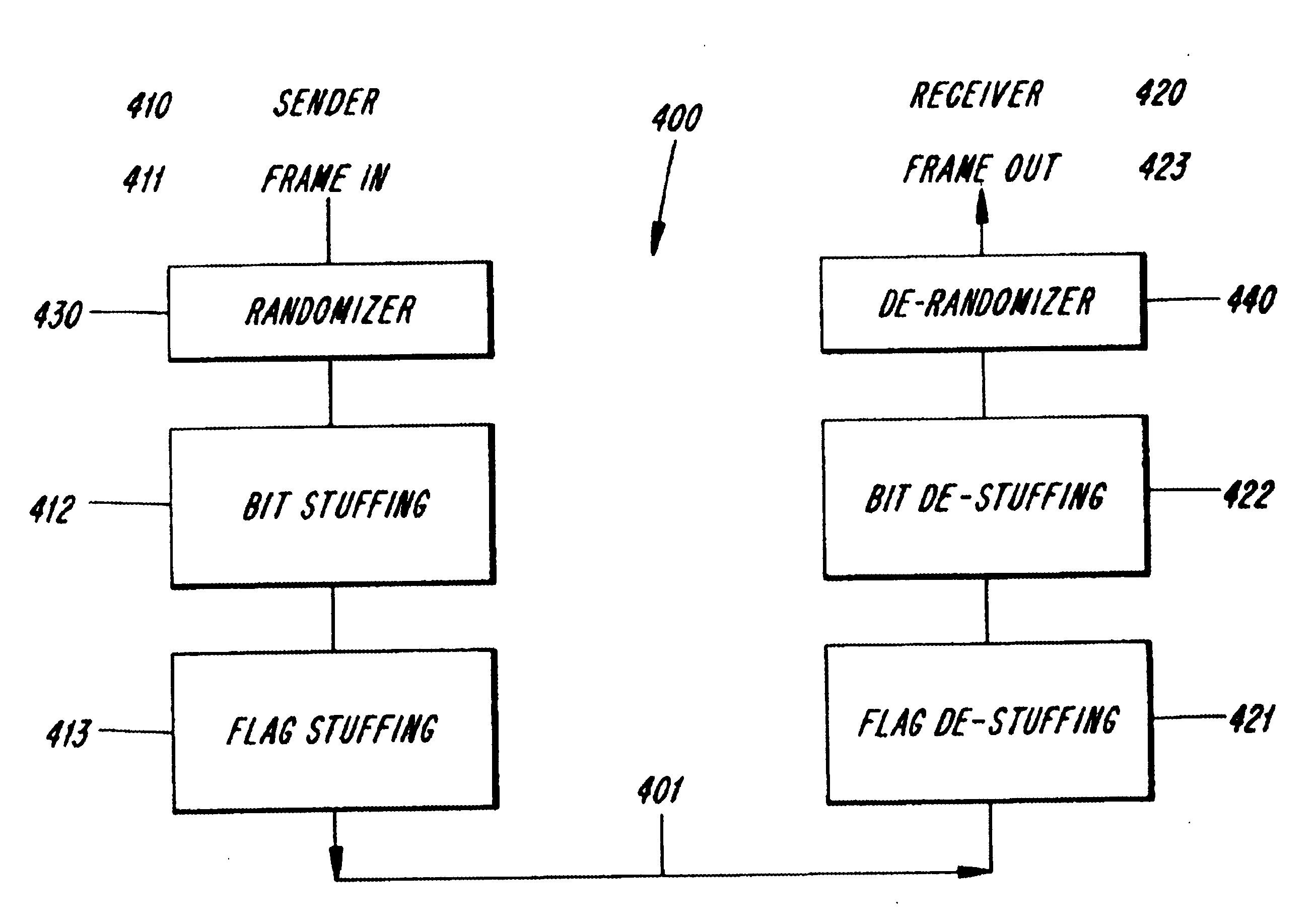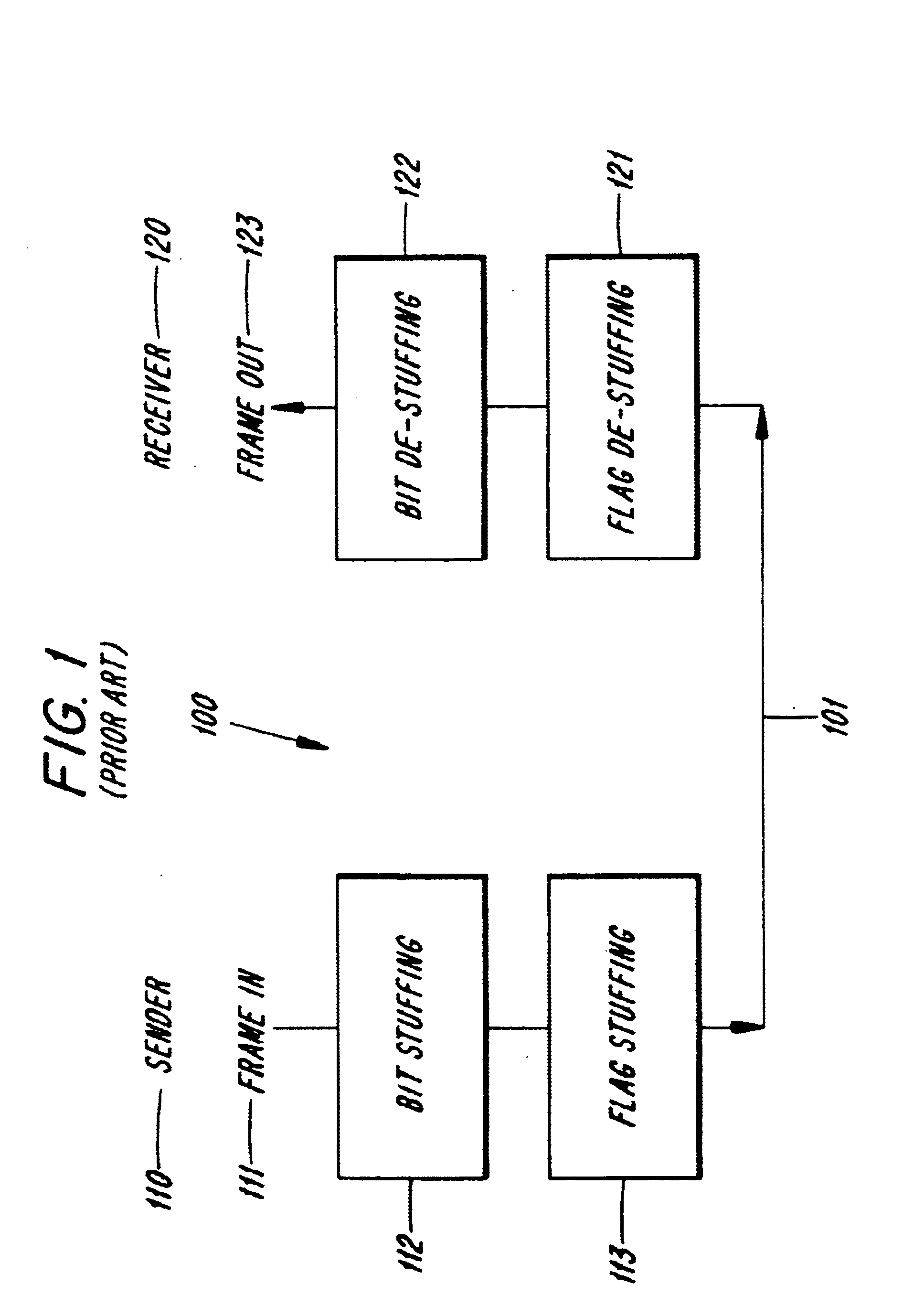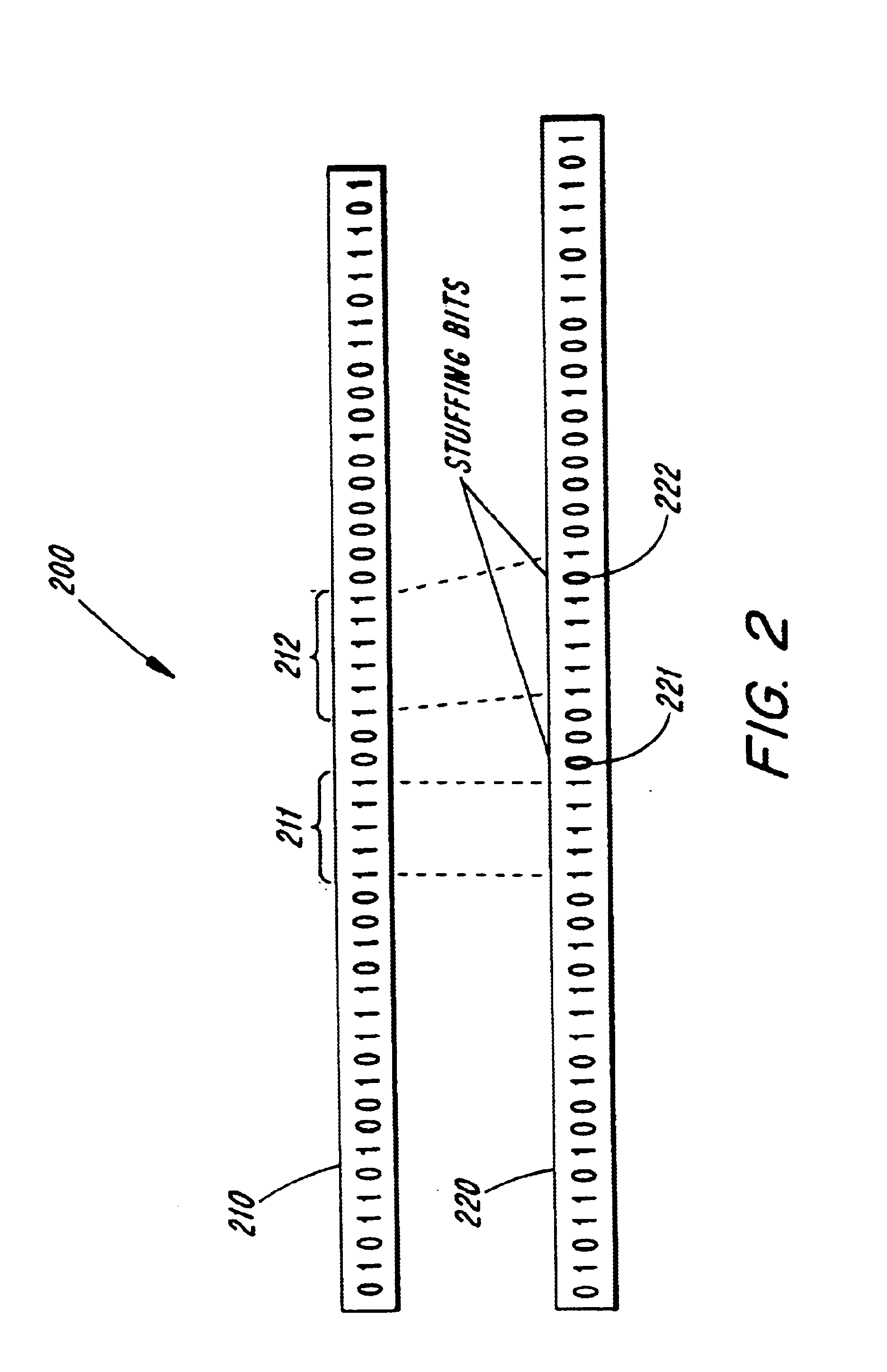Method and apparatus for constant throughput rate adaptation
a constant throughput rate and rate adaptation technology, applied in multiplex communication, digital transmission, baseband system details, etc., can solve the problems of adding overhead, unable to reduce and predict more accurately the overhead of rate adaptation, and lang does not disclose the schem
- Summary
- Abstract
- Description
- Claims
- Application Information
AI Technical Summary
Benefits of technology
Problems solved by technology
Method used
Image
Examples
Embodiment Construction
The various features of the invention will now be described with reference to the figures, in which like parts are identified with the same reference characters. Thus a method and apparatus are described for providing constant throughput rate adaptation.
In accordance with various exemplary embodiments of the present invention, a rate adaptation scheme may be provided based on flag stuffing which increases the throughput on a synchronous link. As can be seen in FIG. 4, an exemplary rate adaptation configuration 400 is shown for adapting data rates between, for example, sender 410 and receiver 420 over link 401. Rate adaptation configuration 400 includes modified flag stuffing in which the frame in 411 contents are preferably randomized in randomizer 430 at sender 410 before applying bit stuffing 412 and flag stuffing 413. At receiver 420, frame in 411 contents may be de-randomized in de-randomizer 440 in order to retrieve the original contents of frame in 411 as frame out 423. It sho...
PUM
 Login to View More
Login to View More Abstract
Description
Claims
Application Information
 Login to View More
Login to View More - R&D
- Intellectual Property
- Life Sciences
- Materials
- Tech Scout
- Unparalleled Data Quality
- Higher Quality Content
- 60% Fewer Hallucinations
Browse by: Latest US Patents, China's latest patents, Technical Efficacy Thesaurus, Application Domain, Technology Topic, Popular Technical Reports.
© 2025 PatSnap. All rights reserved.Legal|Privacy policy|Modern Slavery Act Transparency Statement|Sitemap|About US| Contact US: help@patsnap.com



